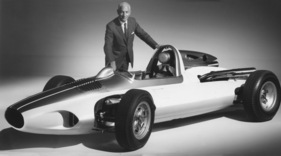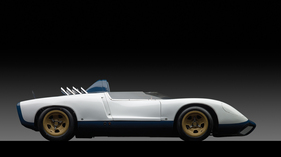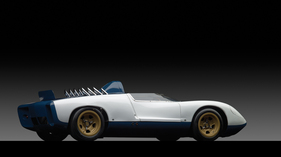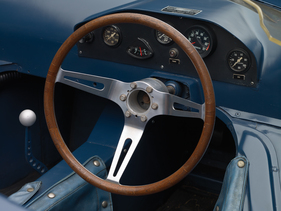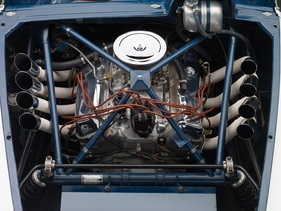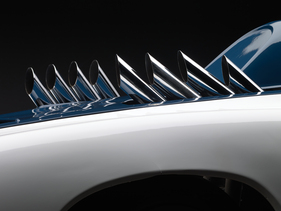When General Motors almost created the ultimate sports car with the Chevrolet CERV II
Summary
In 1963/1964, Zora Arkus-Duntov built a racing sports car that was intended to compete with the best in the world. Because General Motors had sworn off racing, the four-wheel drive prototype degenerated into the CERV II test and experimental vehicle. This report describes the history and technology of the 1964 Chevrolet CERV II, which will be auctioned by RM/Sotheby's in November 2013.
This article contains the following chapters
- Chevrolet Engineering Reserach Vehicles
- Stage 1 as a monoposto
- Stage 2 with all-wheel drive
- Dynamic four-wheel drive
- No racing possible
- Stored and exhibited
- Further information
Estimated reading time: 5min
Preview (beginning of the article)
It reminds the observer of Matchbox and hot-wheel toy cars with its white and blue bodywork and the steeply rising eight exhaust tips. But the 1964 Chevrolet CERV II was no toy, and if Zora Arkus-Duntov's plans had gone further, the Le Mans story might be completely different today. Zora Arkus-Duntov began building experimental vehicles as early as the 1950s. These were called "CERV", which stood for "Chevrolet Engineering Research Vehicle". In November 1960, the first result of the work was presented at the Riverside race track and, surprisingly, this vehicle was a monoposto with free-standing wheels.
Continue reading this article for free?
Photos of this article
















